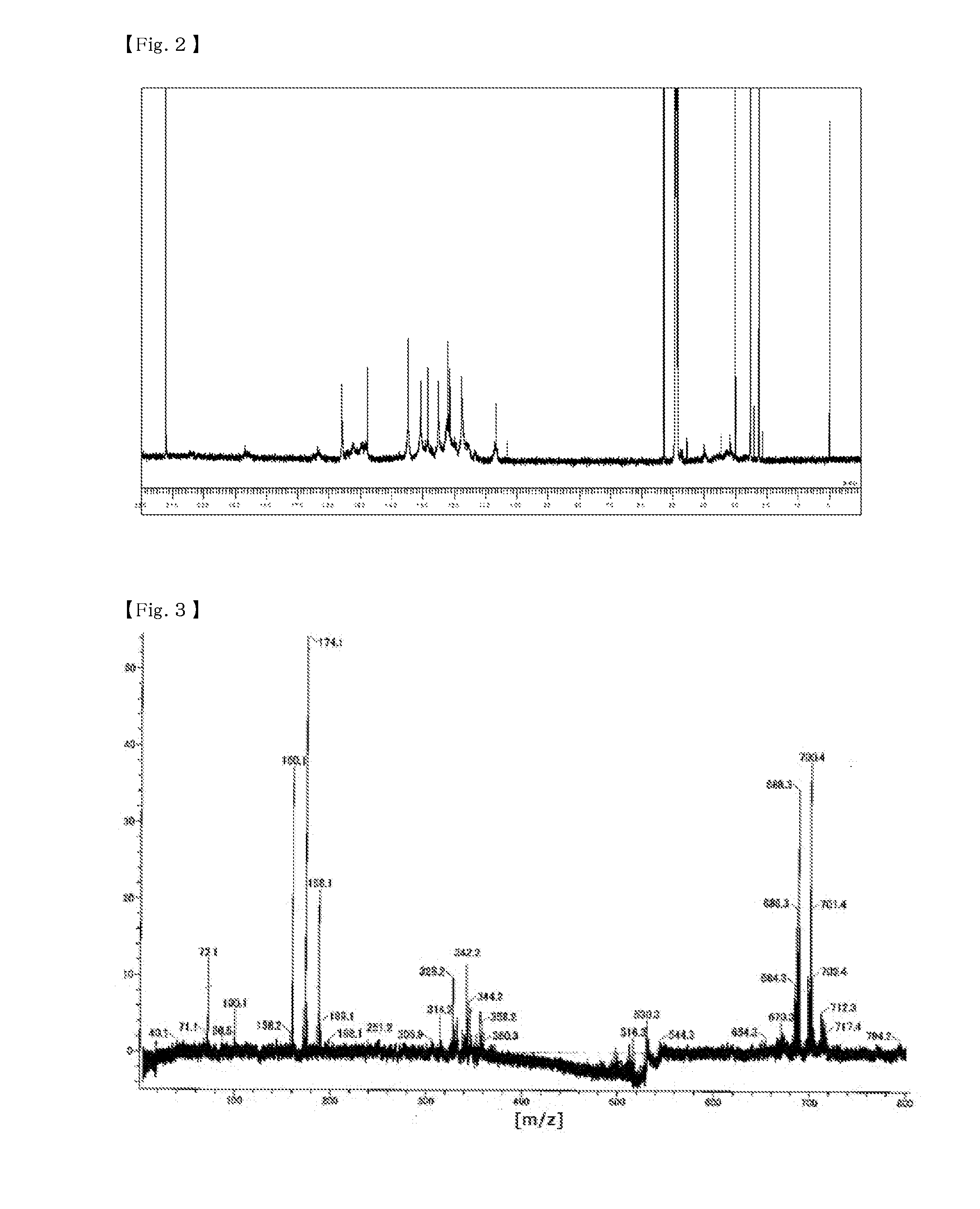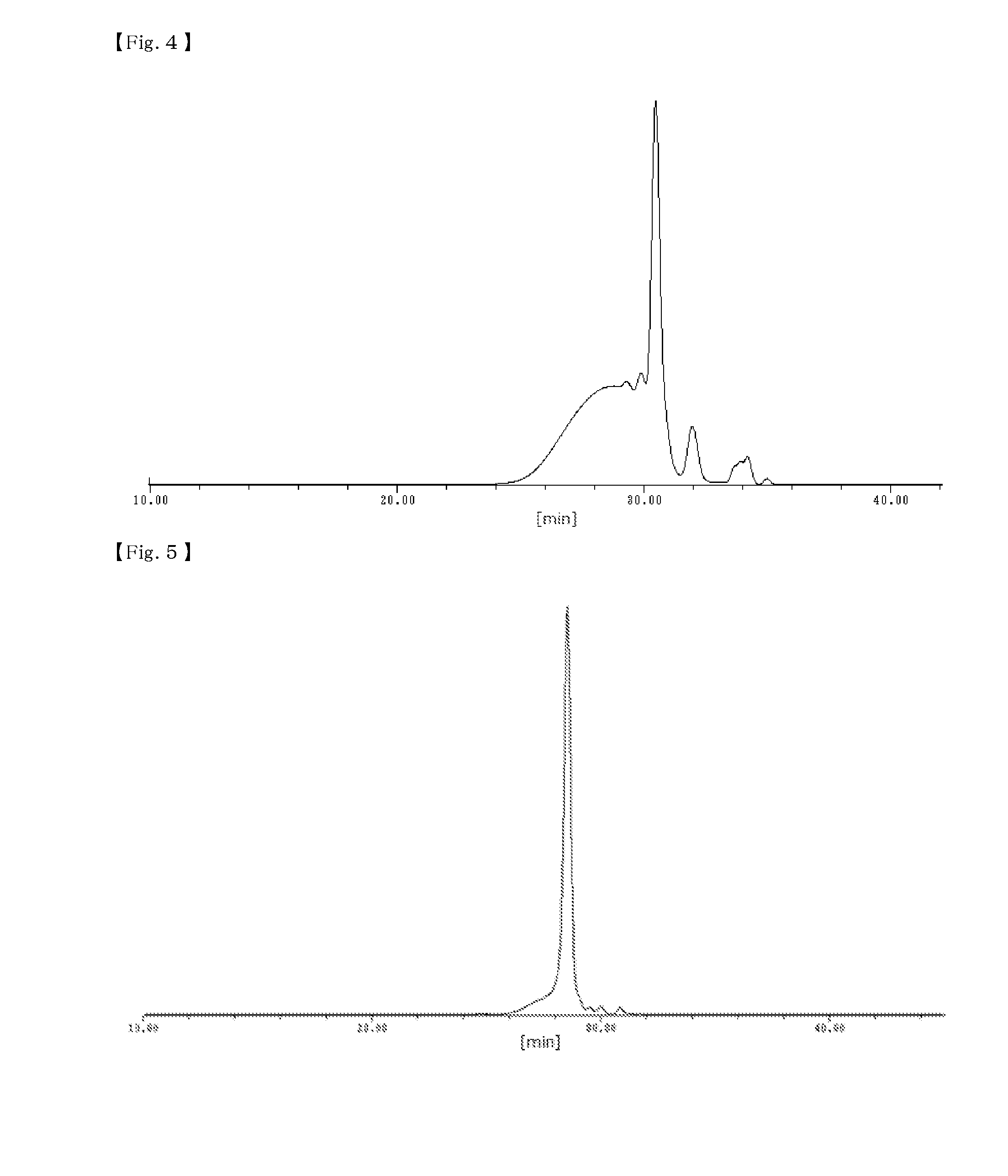Compound containing phenolic hydroxy group, photosensitive composition, composition for resists, resist coating film, curable composition, composition for resist underlayer films, and resist underlayer film
- Summary
- Abstract
- Description
- Claims
- Application Information
AI Technical Summary
Benefits of technology
Problems solved by technology
Method used
Image
Examples
example 1
Preparation of Phenol Resin (1)
[0154]48 parts by mass (0.30 moles) of 1,6-dihydroxynaphthalene, 26 parts by mass (0.36 moles) of 42 mass % formaldehyde aqueous solution, 50 parts by mass of isopropyl alcohol, and 12.8 parts by mass (0.11 moles) of 48% potassium hydroxide were put into a flask equipped with a thermometer, a dropping funnel, a cooling tube, and a stirrer, and stirred at room temperature while blowing nitrogen therein. After that, the resultant was heated to a temperature of 80° C. and stirred for 1 hour. After the reaction was completed, the resultant was neutralized by adding 8 parts by mass of primary sodium phosphate, and then cooled and a crystal was filtered out. After the filtered crystal was washed with 50 parts by mass of water 3 times, the crystal was heated and dried under reduced pressure, thereby obtaining 20 parts by mass of a phenol resin (1). A GPC chart of the phenol resin (1) is shown in FIG. 1, a 13C-NMR chart is shown in FIG. 2, and MS spectrum is s...
example 2
Preparation of Phenol Resin (2)
[0156]19 parts by mass of a phenol resin (2) was obtained in the same manner as in Example 1 except that 9.4 parts by mass (0.11 moles) of sodium hydroxide was used instead of 12.8 parts by mass (0.11 moles) of 48% potassium hydroxide in Preparation Example 1. A peak of 688 corresponding to the compound containing a phenolic hydroxy group (I) represented by Structural Formula (i) above was detected from MS spectrum of the phenol resin (2). In addition, the content of the compound containing a phenolic hydroxy group (I) represented by Structural Formula (i) above in the phenol resin (2) was 36%, which is calculated from GPC the chart.
example 3
Preparation of Phenol Resin (3)
[0157]17 parts by mass of a phenol resin (3) was obtained in the same manner as in Preparation Example 1 except that 11.8 parts by mass (0.36 moles) of 92% paraformaldehyde was used instead of 26 parts by mass (0.36 moles) of 42 mass % formaldehyde aqueous solution in Preparation Example 1. A peak of 688 corresponding to the compound containing a phenolic hydroxy group (I) represented by Structural Formula (i) above was detected from MS spectrum of the phenol resin (3). In addition, the content of the compound containing a phenolic hydroxy group (I) represented by Structural Formula (i) above in the phenol resin (3) was 33%, which is calculated from the GPC chart.
PUM
| Property | Measurement | Unit |
|---|---|---|
| Composition | aaaaa | aaaaa |
| Electrical resistance | aaaaa | aaaaa |
| Sensitivity | aaaaa | aaaaa |
Abstract
Description
Claims
Application Information
 Login to View More
Login to View More - R&D
- Intellectual Property
- Life Sciences
- Materials
- Tech Scout
- Unparalleled Data Quality
- Higher Quality Content
- 60% Fewer Hallucinations
Browse by: Latest US Patents, China's latest patents, Technical Efficacy Thesaurus, Application Domain, Technology Topic, Popular Technical Reports.
© 2025 PatSnap. All rights reserved.Legal|Privacy policy|Modern Slavery Act Transparency Statement|Sitemap|About US| Contact US: help@patsnap.com



